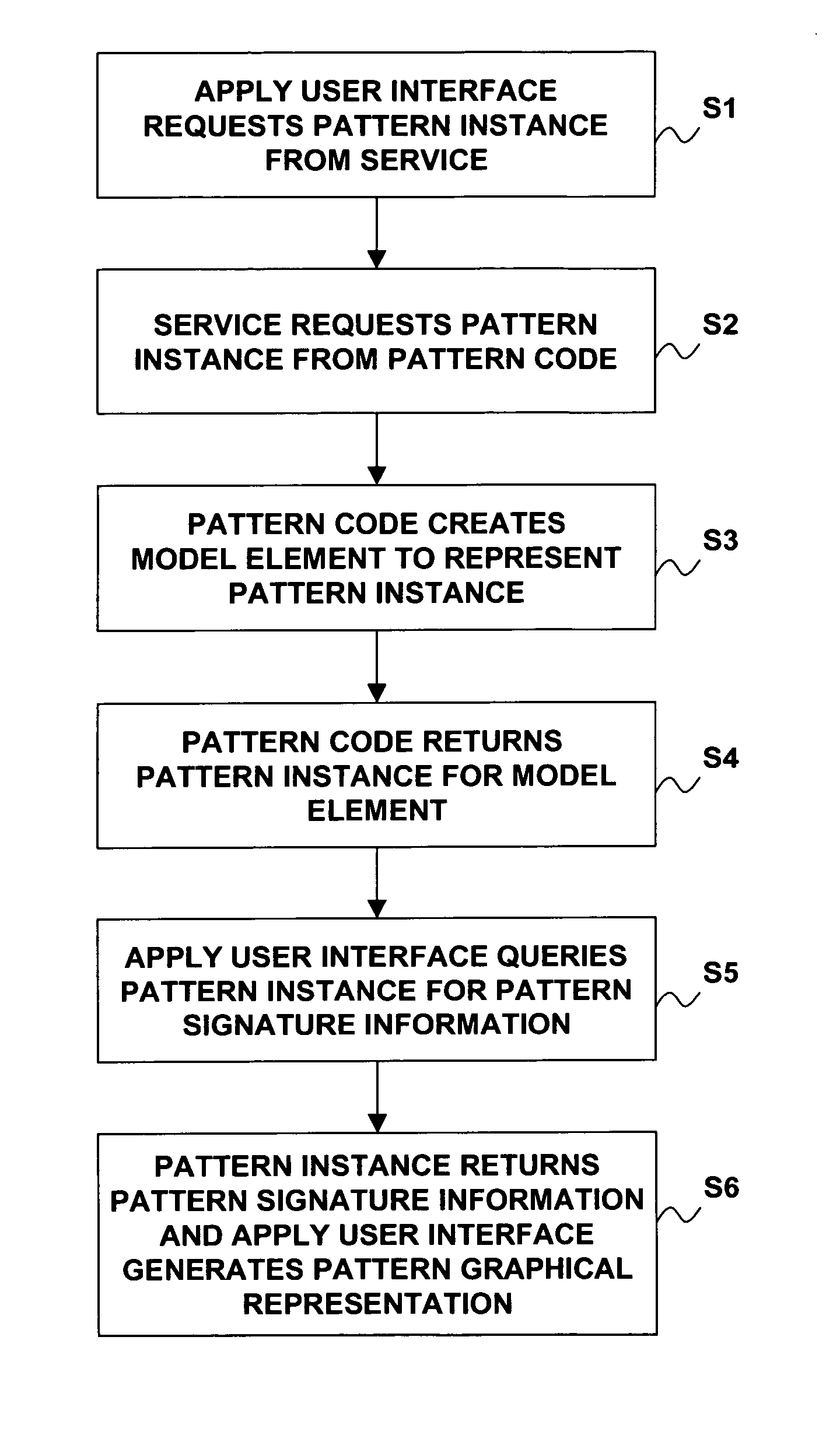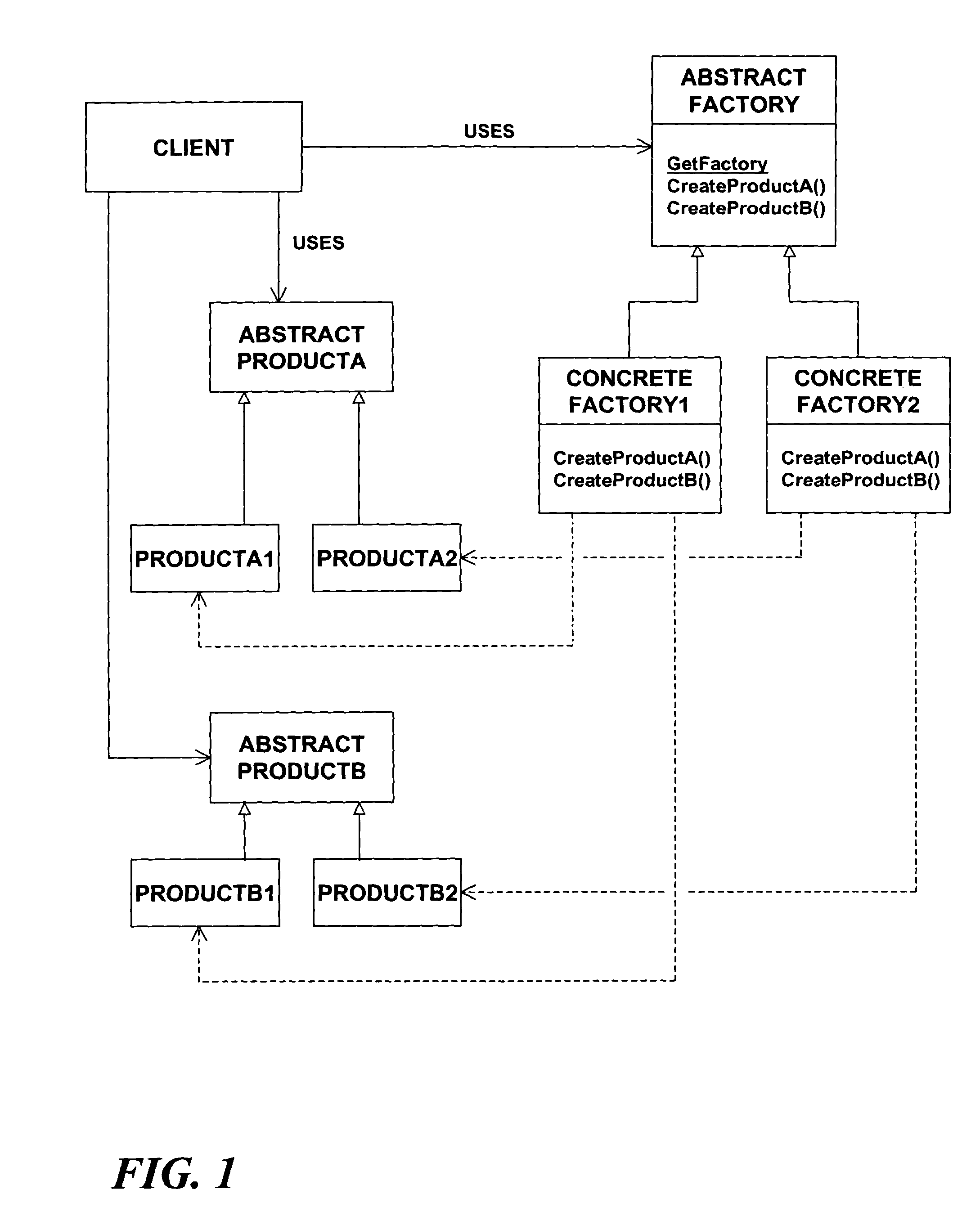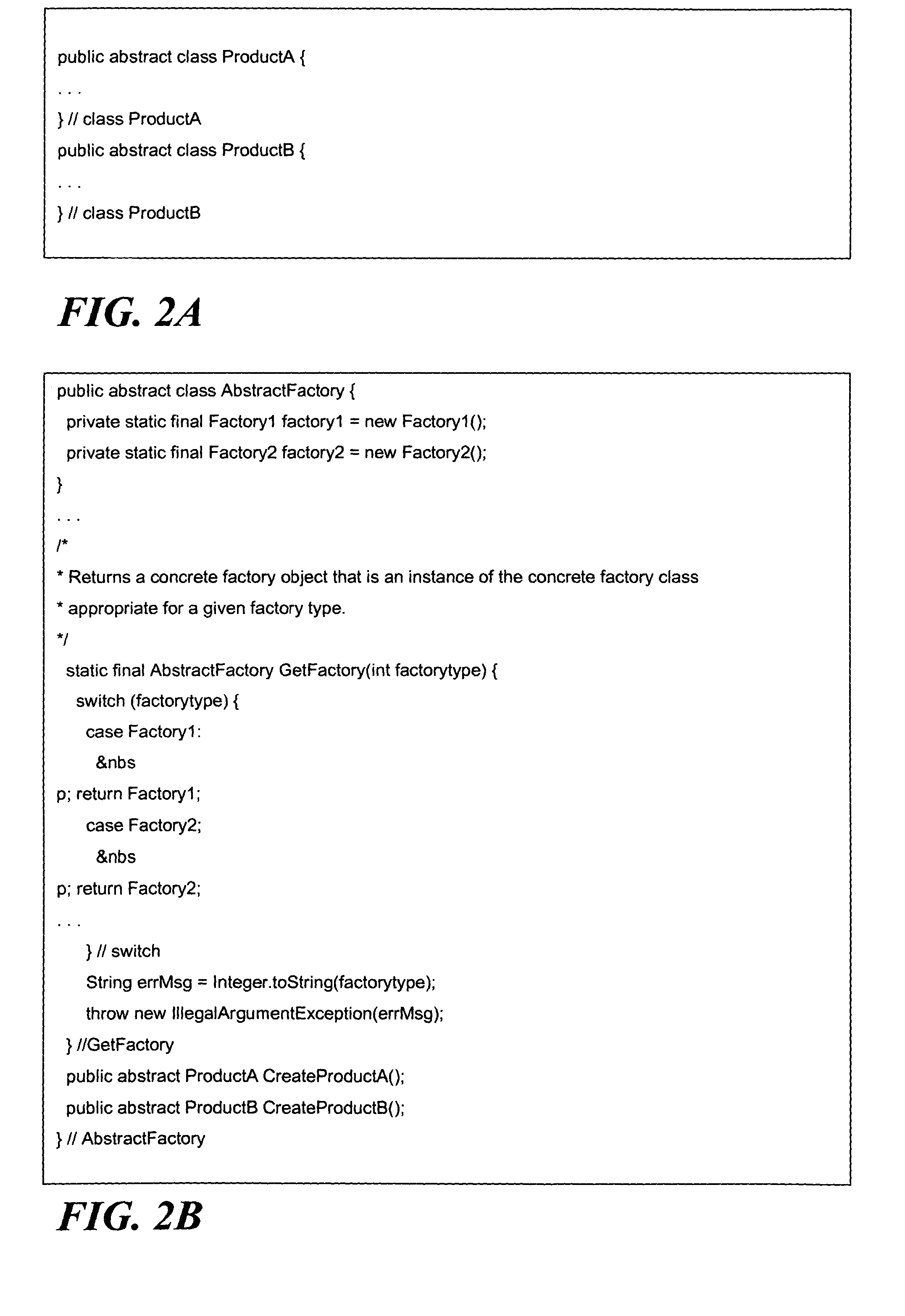Pattern implementation technique
a pattern implementation and pattern technology, applied in the field of computer software systems, can solve the problems of cumbersome and confusing automatic tools for applying patterns in software projects, significant restrictions on the generality and flexibility of patterns that can be implemented, and inability to define patterns in such languages
- Summary
- Abstract
- Description
- Claims
- Application Information
AI Technical Summary
Benefits of technology
Problems solved by technology
Method used
Image
Examples
Embodiment Construction
1. Introduction
[0038]Turning now to the drawing figures wherein like reference numbers indicate like elements in all of the several views, FIG. 1 illustrates the format of a conventional Abstract Factory pattern in order to facilitate understanding of the present invention based on a specific pattern example. The Abstract factory pattern is a creational pattern that was first identified in the “Design Patterns” work cited by way of background above. In object-oriented software development, a “factory” is a software entity where objects are created. The abstract factory pattern provides a single interface for clients to use in creating families of related objects without having to specify concrete classes.
[0039]In FIG. 1, the objects of interest to the client are based on the abstract class definitions “PRODUCTA” and “PRODUCTB.” Using the analogy of an automobile manufacturing plant, PRODUCTA might be a software representation of an engine while PRODUCTB is a software representation ...
PUM
 Login to View More
Login to View More Abstract
Description
Claims
Application Information
 Login to View More
Login to View More - R&D
- Intellectual Property
- Life Sciences
- Materials
- Tech Scout
- Unparalleled Data Quality
- Higher Quality Content
- 60% Fewer Hallucinations
Browse by: Latest US Patents, China's latest patents, Technical Efficacy Thesaurus, Application Domain, Technology Topic, Popular Technical Reports.
© 2025 PatSnap. All rights reserved.Legal|Privacy policy|Modern Slavery Act Transparency Statement|Sitemap|About US| Contact US: help@patsnap.com



